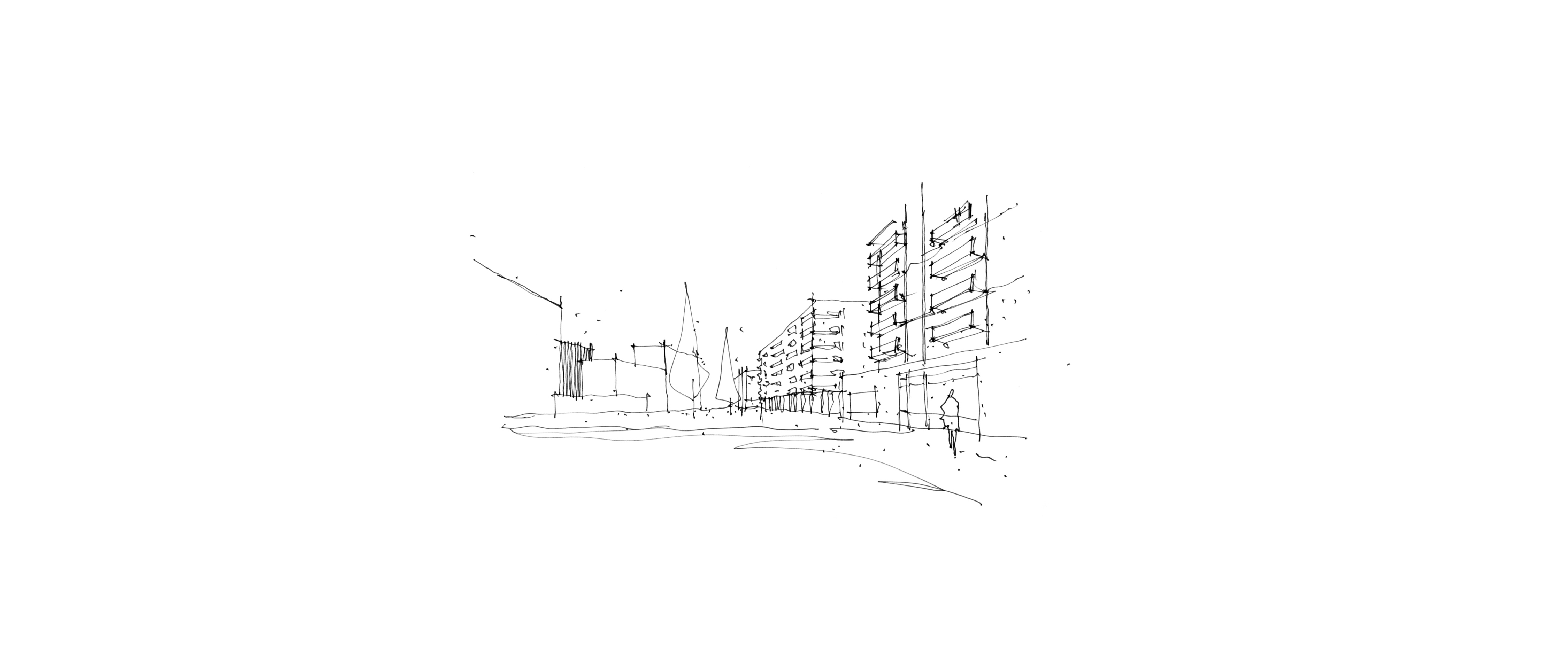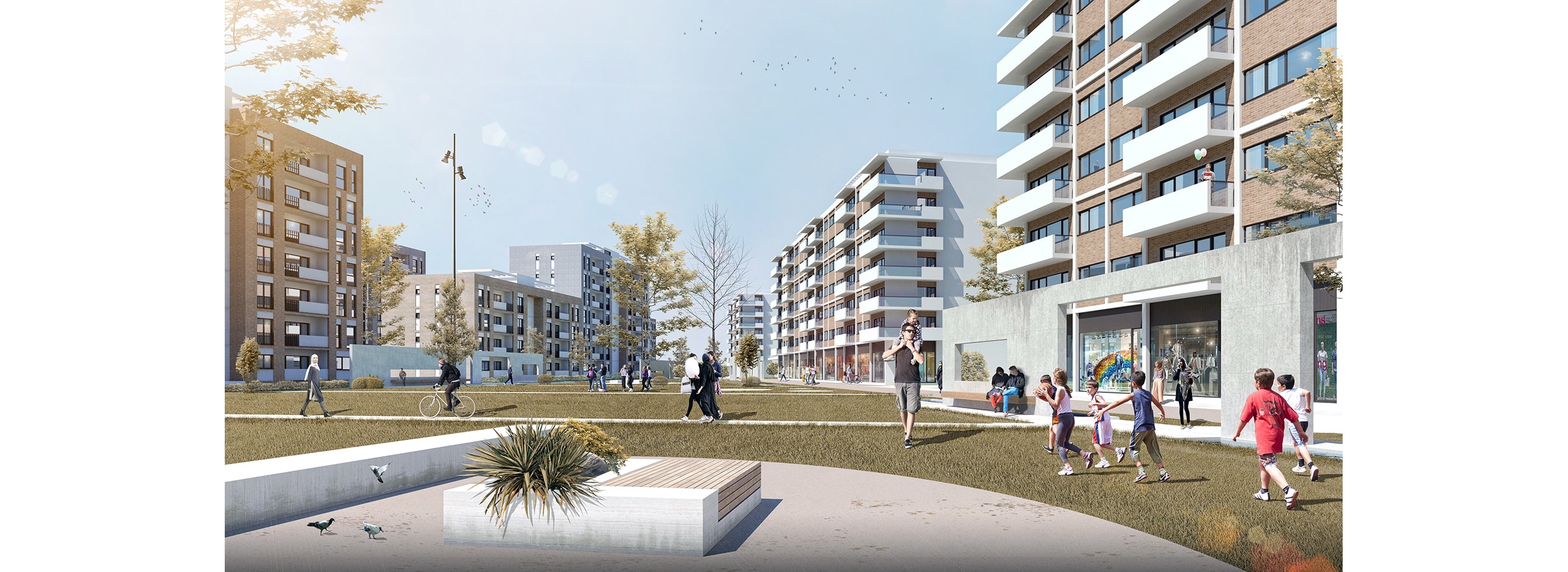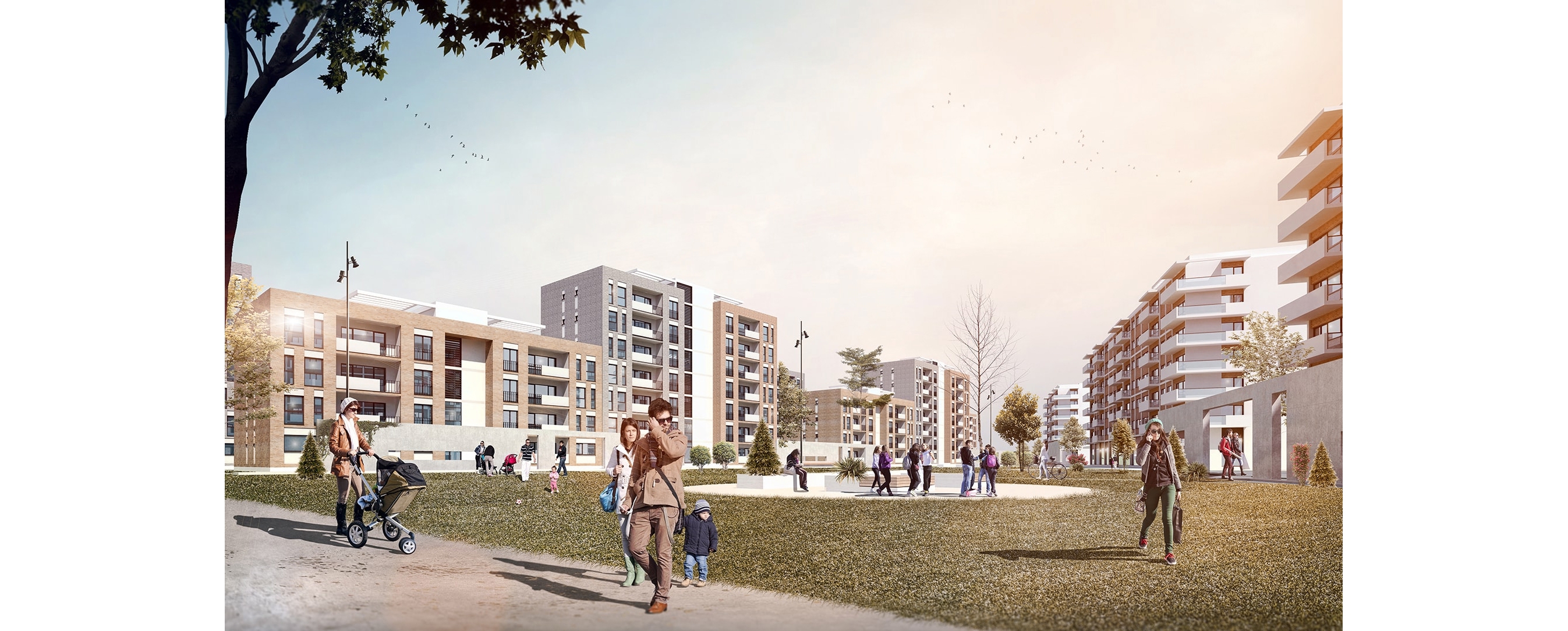

Open Space Hierarchy (Courtyard-Super Courtyard-Street)
“Neighborhood Park” stands out as the dominant component in Open Space approach. Neighborhood Park; It is considered as a “Super Courtyard” located at the geometric center of the Development Lots which holds the perimeter of the project area. The capacity and surface area of the Super Court have been maximized by minimizing the design-related lost areas. The other components of the Public-Quasi Public Open Space organization are Neighborhood Square, which describes the courtyards and neighborhood entrances on the residential islands.

The “Shadow Walls” proposed in the project can be described as integrated urban furniture supported by shallow water ponds and seating units that can shade different angles at different times of day in the park. Another function of the shade walls is that they allow for the possibility of transition between the public and semi-public spaces, while simultaneously providing privacy in the housing-park relationship.
In parallel to Nusaybin Avenue, the building group that defines the eastern perimeter of the Project area is specialized with the use of ground floor trade. The main pedestrian axis, extending from the square to the south, provides intra-pedestrian circulation in the continuity of shopping and parking functions.

Transportation
In terms of vehicle traffic; Project Area fed a service road parallel to the city's backbone, Nusaybin Street and the axis extending in parallel to Huzur Street. At the same time on these two axes, it is located in the open parking pockets for parking needs. Vehicle traffic is designed so as not to cross the neighborhood park, the square and the main pedestrian promenade. Formation of development islands and general transportation fiction is designed by considering the interaction of the perimeter (integration with the city).
Orientation
Depending on the geometric standards and location of the project area, development lots and building groups are mostly oriented towards the east-west. Public spaces and / or open areas are organized in the north-south direction as a wind corridor that will contribute positively to the microclimate. In height hierarchy and block location selections, orientation has been interpreted as a determining parameter.





Architectural Character
The user profile and preferences throughout the project-wide, unlike the classical is “Social Housing” typology, have been decisive in architectural character and typology preferences. Mainly, architectural content bearing traces from the ‘Traditional House’ fiction, Lounge-Living Room (Sofa) and Kitchen relationship is different from the similar. The plan solutions that can be described as 'Adaptive Housing Typology' provide the user with the ability to use the initiative in the living area of the dwelling, despite the inflexible, rigid impositions of the Tunnel Formwork System. In particular, the choice of lounge and living rooms (in combination or individually) is customizable to the needs of their users.
On the other hand the project approached in consideration of production, duration and cost. Depending on these conditions describing the general framework of the movement area in the design, 4-7-floor oriented blocks located in the courtyard perimeter and linear type blocks in parallel to Nusaybin Street were produced.



| Location | Şırnak / Cizre | |
| Program | Concept Urban Design Project / Architectural Preliminary Project | |
| Size | 70.000 m² | |
| Client | KEYM / TOKİ (Housing Development Administration of Turkey) | |
| Year | 2016 |